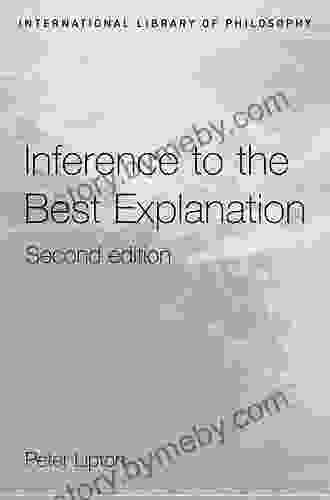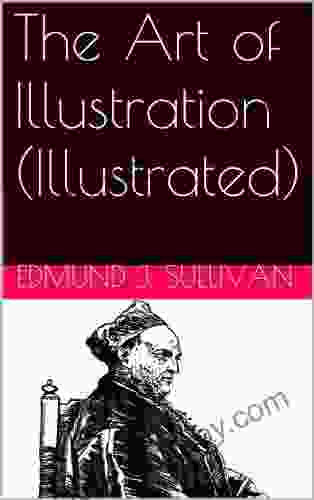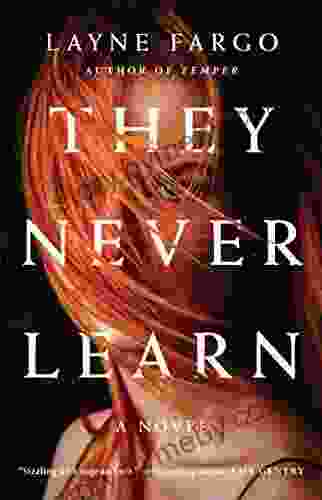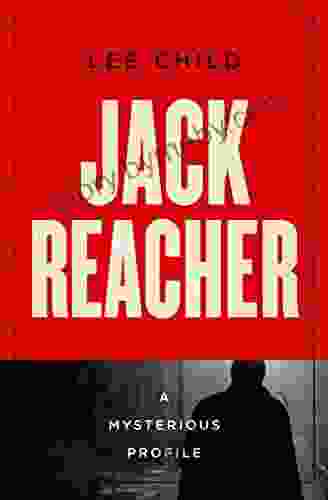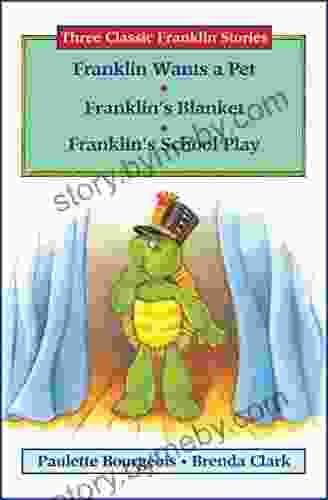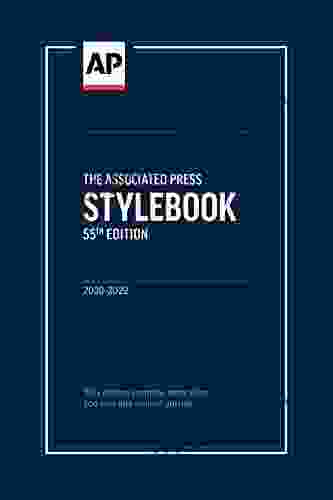Unlock the Enigma: Unraveling the Intricacies of Inference to the Best Explanation

In the labyrinthine realm of philosophy, the concept of inference to the best explanation stands as a beacon of illumination, guiding us towards understanding the complexities of the world around us. This notion, succinctly captured in the seminal work "Inference to the Best Explanation: An International Library of Philosophy," invites us to delve into the intricate tapestry of human thought and reasoning.

4.5 out of 5
| Language | : | English |
| File size | : | 381 KB |
| Text-to-Speech | : | Enabled |
| Screen Reader | : | Supported |
| Enhanced typesetting | : | Enabled |
| Word Wise | : | Enabled |
| Print length | : | 234 pages |
The Genesis of an Idea: A Philosophical Tapestry Unraveled
The concept of inference to the best explanation traces its roots to the fertile soil of antiquity. In the hallowed halls of ancient Greece, philosophers such as Socrates and Aristotle grappled with the enigmatic nature of knowledge and sought to unravel the elusive threads that bind evidence to explanation.
Socrates, with his signature Socratic Method, challenged the prevailing beliefs of his time, relentlessly questioning the foundations of knowledge and urging his disciples to seek truth through rigorous inquiry. Aristotle, the multifaceted polymath, expanded upon Socratic thought, laying the groundwork for a systematic approach to reasoning and knowledge acquisition.
The seeds sown by these philosophical giants blossomed centuries later, finding fertile ground in the minds of Enlightenment thinkers such as David Hume. Hume's skeptical empiricism emphasized the role of experience in shaping human knowledge, challenging the notion of innate ideas and advocating for a rigorous examination of evidence.
The Essence of Inference to the Best Explanation: Unlocking the Hidden Truth
At its core, inference to the best explanation is a method of reasoning that seeks to uncover the most plausible explanation for a given set of observations or phenomena. It is a process of elimination, wherein we carefully consider multiple hypotheses and systematically weigh their strengths and weaknesses.
This approach to explanation is rooted in the principle of parsimony, also known as Occam's Razor. This principle asserts that among competing hypotheses, the one with the fewest assumptions and the simplest structure is generally preferred, all factors considered.
The essence of inference to the best explanation lies in its ability to navigate the labyrinth of competing theories and identify the most compelling account. It is a form of abductive reasoning, where we move from a set of premises to the most probable , drawing upon our knowledge, experience, and logical deduction.
Applications Across Disciplines: A Versatile Tool for Unveiling Truth
The reach of inference to the best explanation extends far beyond the ivory tower of philosophy, finding application in a myriad of disciplines that seek to unravel the complexities of the world.
Scientific Inquiry
In the realm of science, inference to the best explanation plays a pivotal role in theory formation and hypothesis testing. Scientists meticulously gather evidence, formulate hypotheses, and rigorously test them against alternative explanations, striving to find the most coherent and comprehensive account of the observed phenomena.
Historical Analysis
Historians employ inference to the best explanation to interpret past events and craft narratives that make sense of the fragments of history. By examining historical records, weighing conflicting accounts, and considering the broader context, historians seek to piece together the most plausible explanation for the events that shaped the past.
Legal Reasoning
In the hallowed halls of jurisprudence, inference to the best explanation is a cornerstone of legal reasoning. Judges and attorneys carefully evaluate evidence, consider alternative theories, and draw inferences to determine the most likely explanation for a given set of facts.
The Art of Critical Thinking: Cultivating a Skill for Truth-Seeking
Mastering the art of inference to the best explanation is an invaluable skill for anyone seeking to cultivate critical thinking and make informed decisions.
- Gather Diverse Perspectives: Seek out a wide range of viewpoints and consider different explanations for a given phenomenon.
- Evaluate Evidence Critically: Examine evidence with a discerning eye, scrutinizing its reliability, relevance, and potential biases.
- Formulate Competing Hypotheses: Develop multiple plausible explanations for the observed phenomena and carefully weigh their strengths and weaknesses.
- Apply the Principle of Parsimony: Favor explanations that are simpler, more elegant, and make fewer assumptions.
- Test and Refine Hypotheses: Continuously test and refine your hypotheses through further observation, experimentation, or critical analysis.
Delve into the Depths: Exploring the International Library of Philosophy
"Inference to the Best Explanation" is a profound and illuminating volume that delves into the intricacies of this fundamental concept. As part of the esteemed International Library of Philosophy, this book offers a comprehensive exploration of inference to the best explanation, its history, its applications, and its significance for understanding the nature of knowledge and reasoning.
Within its pages, renowned scholars and philosophers present a tapestry of diverse perspectives, engaging in a lively and thought-provoking dialogue that challenges conventional wisdom and invites readers to embark on an intellectual odyssey.
: Embracing the Enigma, Unraveling the Truth
Inference to the best explanation is a powerful tool for uncovering truth and making sense of the world around us. It is a method of reasoning that requires both intellectual rigor and an open mind, encouraging us to embrace the enigma and relentlessly pursue the most plausible explanation.
By mastering the art of inference to the best explanation, we empower ourselves to navigate the complexities of life, make informed decisions, and cultivate a deeper understanding of both ourselves and the universe we inhabit.
4.5 out of 5
| Language | : | English |
| File size | : | 381 KB |
| Text-to-Speech | : | Enabled |
| Screen Reader | : | Supported |
| Enhanced typesetting | : | Enabled |
| Word Wise | : | Enabled |
| Print length | : | 234 pages |
Do you want to contribute by writing guest posts on this blog?
Please contact us and send us a resume of previous articles that you have written.
 Book
Book Novel
Novel Page
Page Chapter
Chapter Text
Text Story
Story Genre
Genre Reader
Reader Library
Library Paperback
Paperback E-book
E-book Magazine
Magazine Newspaper
Newspaper Paragraph
Paragraph Sentence
Sentence Bookmark
Bookmark Shelf
Shelf Glossary
Glossary Bibliography
Bibliography Foreword
Foreword Preface
Preface Synopsis
Synopsis Annotation
Annotation Footnote
Footnote Manuscript
Manuscript Scroll
Scroll Codex
Codex Tome
Tome Bestseller
Bestseller Classics
Classics Library card
Library card Narrative
Narrative Biography
Biography Autobiography
Autobiography Memoir
Memoir Reference
Reference Encyclopedia
Encyclopedia Laurent Bernut
Laurent Bernut Leon Pantenburg
Leon Pantenburg Lakita Wilson
Lakita Wilson Leonard Moore
Leonard Moore Lara Maiklem
Lara Maiklem Lawrence C Ross
Lawrence C Ross Thorstein Veblen
Thorstein Veblen Kristin Kimball
Kristin Kimball Maria Tan
Maria Tan Lesley L Coffin
Lesley L Coffin Seth Wickersham
Seth Wickersham Tamara Rhoades Baldwin
Tamara Rhoades Baldwin Lisa Hopp
Lisa Hopp Nikala Smith
Nikala Smith Larry Miller
Larry Miller Michael H Frisch
Michael H Frisch Leah Ingledew
Leah Ingledew Lily Fulop
Lily Fulop Wolfgang Jank
Wolfgang Jank Martin Adeney
Martin Adeney
Light bulbAdvertise smarter! Our strategic ad space ensures maximum exposure. Reserve your spot today!
 Hugh BellFollow ·6.1k
Hugh BellFollow ·6.1k Rubén DaríoFollow ·14.6k
Rubén DaríoFollow ·14.6k Aubrey BlairFollow ·6.1k
Aubrey BlairFollow ·6.1k Tennessee WilliamsFollow ·5.8k
Tennessee WilliamsFollow ·5.8k Greg CoxFollow ·12.2k
Greg CoxFollow ·12.2k Ronald SimmonsFollow ·18.9k
Ronald SimmonsFollow ·18.9k Bruce SnyderFollow ·9.2k
Bruce SnyderFollow ·9.2k Gene PowellFollow ·9.9k
Gene PowellFollow ·9.9k
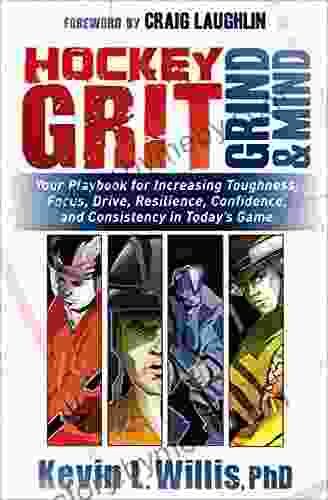
 Forrest Reed
Forrest ReedHockey Grit, Grind, Mind: The Ultimate Guide to Mental...
Hockey is a tough...
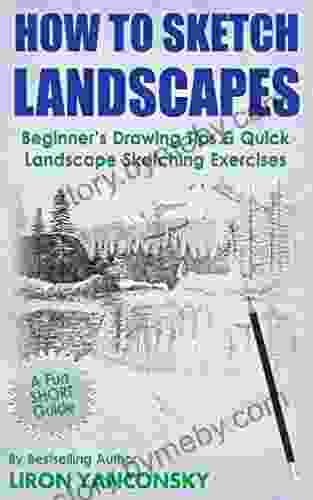
 Juan Rulfo
Juan RulfoUnlock Your Inner Artist: Embark on a Sketching Journey...
Embrace the Beauty of Nature Through Quick...
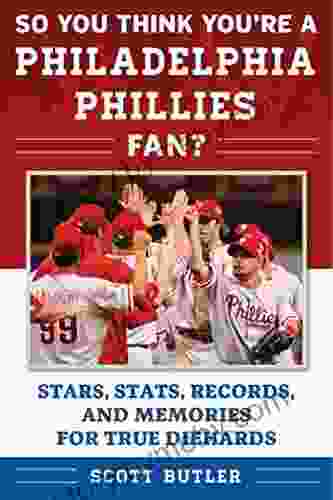
 Nathaniel Hawthorne
Nathaniel HawthorneSo You Think You're a Philadelphia Phillies Fan?
The Philadelphia Phillies are one of the most...
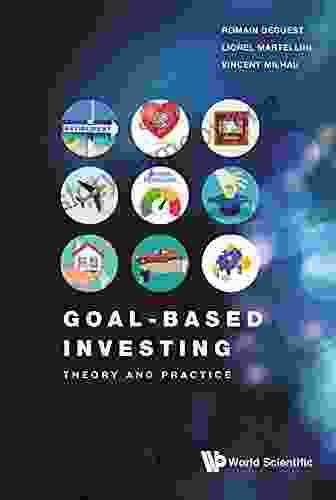
 Jeff Foster
Jeff FosterGoal-Based Investing: A Comprehensive Guide to Achieving...
Investing is not...
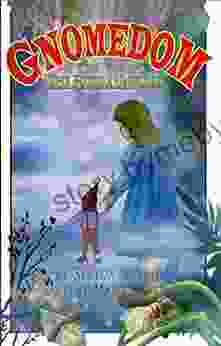
 Aleksandr Pushkin
Aleksandr PushkinGNOMEDOM: The Future Unfolds (Gnomedom Tales 1)
Escape into the enchanting world of Gnomedom...
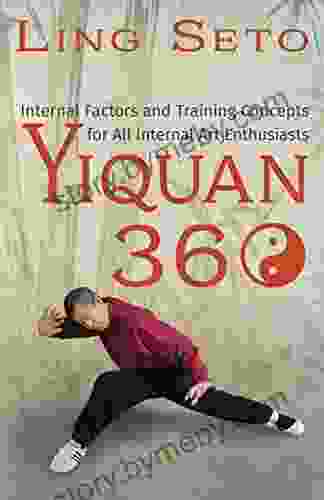
 Branden Simmons
Branden SimmonsInternal Factors And Training Concepts For All Internal...
Internal arts, such as Tai...
4.5 out of 5
| Language | : | English |
| File size | : | 381 KB |
| Text-to-Speech | : | Enabled |
| Screen Reader | : | Supported |
| Enhanced typesetting | : | Enabled |
| Word Wise | : | Enabled |
| Print length | : | 234 pages |


